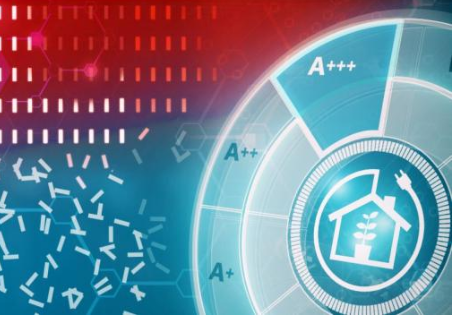Six Fraunhofer institutes are joining forces on a newly launched project, ElKaWe (for Electrocaloric Heat Pumps) aiming to develop efficient solid-state and refrigerant-free electrocaloric heat pumps over the next four years.

Nowadays, heat pumps work almost exclusively on the basis of compressor technology which requires harmful refrigerants. On the contrary, solid-state heat pumps including electrocaloric systems work with harmless fluids such as water. Caloric systems are also noiseless, which is important for the air conditioning of electric vehicles, for example.
When an electric field is applied to electrocaloric materials, the electric moments in the field are aligned – the material heats up. The resulting heat is dissipated via a heat sink so that the material cools down again to its initial temperature. If the electric field is removed now, the order of the electric moments is reduced and the material cools down. At this stage it can absorb thermal energy from a heat source. The effect is reversible. In this way, a cycle can be set up that functions as an efficient heat pump for cooling or heating.
"We are convinced that there is an opportunity to completely replace compressor-based heat pumps in the long term," explains Prof. Karsten Buse, Executive director at Fraunhofer IPM, who is in charge of the project. "According to the knowledge we have gained in this field to date, electrocalorics can have disruptive potential for heating and cooling technology".
According to the German Environment Agency, more than half of the total energy used throughout Germany is used for heating and cooling. Heat pumps that use environmental heat for heating and hot water preparation in buildings and are operated with electricity generated from renewable sources are thus an important building block for heat generation.
They are the missing link between electricity and heat generation, which is still mainly based on fossil fuels. However, the growth in heat pumps is hesitant. The reason for this is insufficient economic efficiency. Electrocaloric heat pumps promise a significantly higher degree of efficiency, which will promote the spread of heat pumps for air conditioning in buildings. In refrigeration technology, the research team focuses primarily on industrial cooling technology, vehicle air conditioning, server and control cabinet cooling and laboratory refrigerators.
In principle, the technology is also suitable for household cooling technology. Most manufacturers are now switching to natural refrigerants such as isobutane or propane. Although the latter are not environmentally harmful, they are highly explosive, which is why they are out of question for safety-critical applications – such as in industry or the automotive sector.
ix Fraunhofer institutes are joining forces on a newly launched project, ElKaWe (for Electrocaloric Heat Pumps) aiming to develop efficient solid-state and refrigerant-free electrocaloric heat pumps over the next four years.
The scientists will work on material and system design to demonstrate the disruptive potential of the technology. Fraunhofer IKTS has extensive experience with ceramic electrocaloric materials and coatings. Fraunhofer IAP and LBF contribute know-how for the development of polymer materials that are enhanced for use in electrocaloric heat pumps. Fraunhofer FEP develops special coatings for the insulation and functionalization of components. In addition to functional polymers, Fraunhofer LBF will also investigate the service life and reliability of materials and systems. Fraunhofer IAF will develop the electrical control for the heat pumps. Materials and components must be stable over the long term, sufficiently available, cost-effective and, last but not least, harmless. All these competencies are brought together to implement a completely new system approach patented by Fraunhofer IPM. This approach provides for heat transfer through a combination of evaporation and condensation of a harmless fluid in so-called heat pipes with a thermal diode.
Heat dissipation has so far proved to be a bottleneck in the efficiency of electrocaloric systems: the faster it takes place, the more powerful the pump is. Preliminary studies have shown that this can be achieved much more quickly with the new concept. The systems operate without active pumping and thus achieve a much higher cycle frequency than previous systems. The team's goal is to have a demonstrator with an output of 100 watts and a temperature range of 30 K in four years' time.